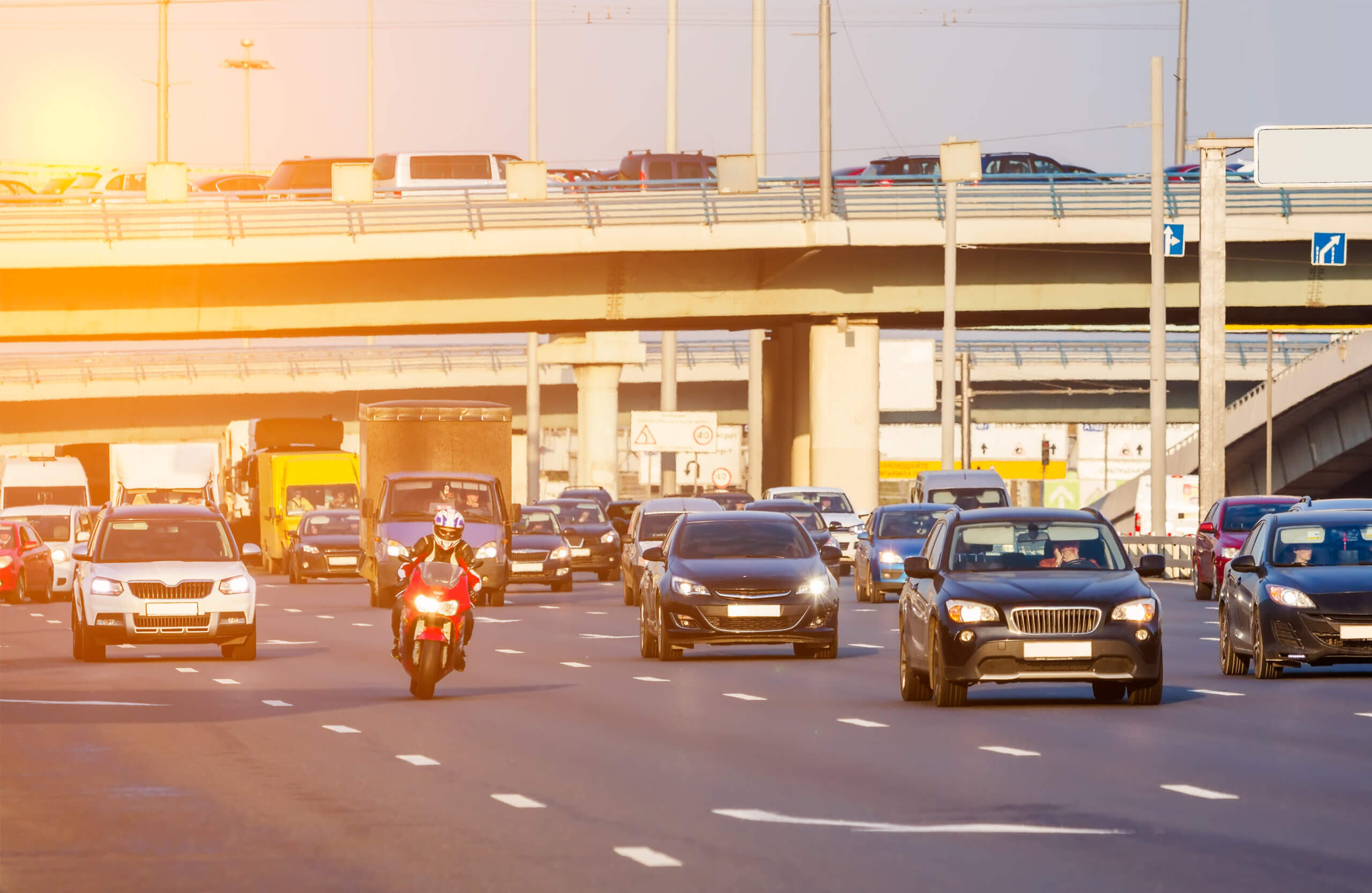
Navigating California’s highways is an experience like no other, especially when you’re alongside a motorcycle. One practice that sets the Golden State apart from most places is lane splitting. As part of the motorcycle rules of the road, lane splitting in California is legal, but it’s also a topic that demands careful understanding and responsible riding.
READ MORE: 5 Things To Know From The California Motorcycle Handbook
Lane splitting offers motorcyclists a distinct advantage in heavy traffic, but it requires skill, judgment, and a strong understanding of the motorcycle rules of the road. For Californians looking to get their motorcycle permit, learning this rule is critical. In this article, we will go into detail about how motorists can practice good safety habits and avoid dangerous motorcycle accidents.
What Is Lane Splitting?
Lane splitting, also known as lane sharing or white-lining, involves a motorcycle moving between slow-moving or stopped traffic lanes. While this might sound like a risky maneuver, it can be an effective way to navigate through congested traffic when done responsibly. California is the only state that explicitly allows lane splitting, a testament to its motorcycle-friendly laws.
Legality Of Lane Splitting In California
Lane splitting in California became officially legal in 2016 when Assembly Bill No. 51 was signed into law by Gov. Jerry Brown. The bill defines lane splitting and authorizes the California Highway Patrol (CHP) to develop safety guidelines. Historically, the law makes California a pioneering state in setting motorcycle rules of the road.
CHP has lane splitting guidelines posted here as an online resource for motorists and roadway users. Transportation experts admit lane splitting can potentially put others in danger and it should only be practiced by experienced riders. Everyone must travel at their own risk and be mindful of motorcycle rules of the road.
Safety Guidelines
Lane splitting offers motorcyclists a distinct advantage in heavy traffic, but it requires a strong understanding of the motorcycle rules of the road. The California Department of Motor Vehicles (DMV) collaborates with CHP and establishes key safety guidelines. These motorcycle rules of the road advise the following:
- Travel at a speed that’s no more than 10 mph faster than other traffic
- Don’t lane split when traffic flow is 30 mph or faster
- Consider your surrounding environment
- Be alert and anticipate possible movements from other road users
While lane splitting is a privilege, it’s crucial to prioritize safety. The American Motorcyclist Association (AMA) endorses lane splitting because the law focuses on protecting riders. According to a 2015 study by the University of California-Berkeley, lane splitting riders are less likely to be rear-ended in traffic and suffer severe head injuries.
Closing Advice
California’s progressive approach to lane splitting demonstrates its commitment to evolving motorcycle rules of the road. As a rider, it’s your responsibility to uphold these rules and practice safe maneuvers. With a large number of motorcyclists in California, there will unfortunately still be motorcycle accidents. Deldar Legal helps riders file personal injury claims when the situations calls for it.
Not all motorcycle accidents are the fault of lane splitting. If you or a loved one is injured unexpectedly, you may be entitled to compensation from an individual or an insurance company. Schedule a free case evaluation by calling (844) 335-3271 or contact us via our website. Deldar’s experienced team of motorcycle accident lawyers represent victims across California.
Tagged with: driver safety, motorcycle laws, road safety, safety tips
Posted in: Motorcycle Accidents
